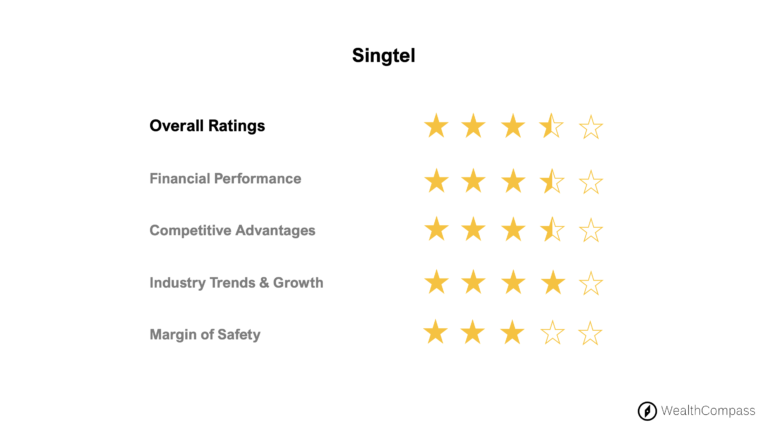How rising interest rates affect REITs
Interest rates may not sound like the most exciting topic in finance, but they’re actually one of the most fundamental concepts to understand if you want to be a successful investor. So, what exactly are interest rates? In this article, we will discuss what interest rates are and how it affect stocks and REITs investing.
- What are interest rates?
- Why central banks adjust interest rates?
- How does Singapore adjust interest rates?
- What are the impacts on stocks?
- Rising interest rates and REITs
1. What are interest rates?
When you borrow money, you’ll typically have to pay interest to the lender, which compensates them for the risk of not getting their money back. Interest is usually expressed as an annual percentage of the amount borrowed and is applied to mortgages, credit cards, overdrafts, and even savings accounts.
However, all of these interest rates are based on a single underlying rate – the one set by your country’s central bank. Known as the “base rate,” it’s the rate at which commercial banks can borrow from each other or from the central bank.
Because financial institutions base their interest rates on the central bank’s rate, any change in the base rate can have a significant impact on the economy. If the central bank raises the base rate, banks will likely increase their interest rates too, which can cause stocks and bonds to fluctuate, currencies to shift, and even trigger or prevent a recession.
As an investor, it’s important to keep an eye on interest rates and adjust your portfolio accordingly. In this article, we’ll take a deeper dive into how interest rates affect the markets and what you can do to stay ahead. But first, let’s explore why central banks change interest rates in the first place.
2. Why central banks adjust interest rates?
Lowering interest rates can stimulate economic growth by making it cheaper for businesses to borrow and invest in expansion. This increased business activity can lead to more job opportunities and less unemployment. Additionally, lower rates make it more affordable for individuals to borrow and spend, particularly on big-ticket items like cars and homes. Overall, lower interest rates can help prop up a struggling economy.
However, if economic growth becomes too fast, inflation can become a problem. When prices rise too quickly, it can become difficult for households and businesses to save money or plan for the future, which can lead to an economic crash. In this scenario, central banks may raise interest rates to discourage borrowing and spending, which can slow down economic growth and keep inflation in check.
By adjusting interest rates, central banks can steer the economy in a particular direction, either towards growth or towards stability. But it’s a delicate balancing act – too much growth can lead to inflation and instability, while too little growth can result in stagnation and unemployment. Understanding how interest rates work and how they impact the economy can help you make smarter investment decisions and stay ahead of market trends.
3. How does Singapore adjust interest rates?
The Monetary Authority of Singapore (MAS) takes a different approach to monetary policy compared to most central banks. Instead of targeting interest rates, MAS uses the nominal exchange rate as its intermediate target. This is because Singapore’s economy is small and open, with imports and exports making up more than 300% of GDP and almost 40 cents of every dollar spent domestically going towards imports. As a result, changes in the exchange rate have a stronger impact on inflation than changes in interest rates.
The nominal exchange rate has a direct and indirect effect on prices in the Singaporean economy, including import and export prices, wages, rentals, and consumer and output prices. Research has shown that the exchange rate is a more effective tool of monetary policy in very open economies like Singapore.
In Singapore, interest rates are mostly determined by no-arbitrage conditions like Uncovered Interest Parity (UIP) or Covered Interest Parity. When the Singapore dollar is expected to appreciate against other currencies, domestic interest rates may be at a discount to global interest rates, and vice versa.
In practice, Singapore Interbank Offered Rate (SIBOR) and Singapore Swap Offer Rate (SOR) have been at a discount to the US dollar London Interbank Offered Rate (LIBOR), reflecting market expectations that the Singapore dollar would appreciate against the US dollar. This lower interest return is compensated by the expected increase in the value of the Singapore dollar in international currency markets.
4. What are the impacts on stocks?
The relationship between interest rates and stocks is complex and depends on various factors. In general, low interest rates can be good for businesses as it reduces the cost of borrowing and makes it easier for them to finance expansion. This can lead to increased profits and, in turn, higher stock prices. However, there are exceptions, such as banks that rely on higher interest rates to charge more for mortgages and other loans.
When central banks lower interest rates to combat an economic slowdown, investors may become jittery about the future prospects of companies and the stock market. This may lead to a drop in stock prices even if interest rates are low.
Investors should adjust their portfolio based on the prevailing economic environment. In a low-interest-rate environment, keeping money in a savings account may not be the best option, and investors may want to consider increasing their exposure to stocks to potentially earn higher returns. Conversely, in a high-interest-rate environment, stocks may be relatively less attractive, and investors may want to consider other options.
5. Rising interest rates and REITs
Real estate investment trusts (REITs) have been a popular investment choice for those seeking passive income in recent years, thanks to their consistent dividend payouts and relatively stable share prices. However, recent months have seen a sharp decline in REIT prices, particularly after the US Federal Reserve announced a series of rate hike in since 2022. This has left many investors wondering whether REITs are still a good long-term asset for those seeking passive income.
One of the primary concerns with rising interest rates is the impact on REITs’ borrowing costs. Many REITs use leverage to own properties, and higher financing costs due to rising interest rates can potentially reduce distributable income to investors. Additionally, investors may begin to compare the yields offered by REITs with those of other assets, such as risk-free bonds and fixed deposit rates, which have recently been offering yields of 2.8% and 3.48%, respectively. This could potentially make REITs less attractive to investors seeking yield.
However, history has shown that REITs can still perform well during periods of rising interest rates. During the seven periods when the Monetary Authority of Singapore (MAS) increased the government bond yield, Singapore REITs (S-REITs) outperformed the markets three times. There is not necessarily a strong negative correlation between rising interest rates and REITs’ returns.

It’s worth noting that REITs with higher gearing ratios are likely to be more heavily impacted by rising interest rates. For example, Lippo Malls Indonesia Retail Trust (SGX: D5IU) and ESR-REIT (SGX: J91U) have gearing ratios of 42% and 40%, respectively, and may be more vulnerable during this period.
That said, there are still opportunities for investors in the REIT market. REITs with a higher percentage of loans under fixed-rate arrangements may have a greater buffer from rising interest rates. Additionally, REITs with higher yields may be better positioned to weather interest rate increases than those with lower yields. These factors could be important considerations for investors looking to build a portfolio of REITs that can weather market turbulence.

Another important factor to consider is the underlying property market. If the property market is strong and rental income is expected to continue growing, this could offset some of the impact of rising interest rates on REITs. In contrast, if the property market is weak, even a small rise in interest rates could have a significant impact on REITs’ financial performance.
Summary
Overall, while rising interest rates can certainly have an impact on REITs, they are not necessarily a death knell for the asset class. Investors who are willing to take a long-term view and do their due diligence in selecting the right REITs for their portfolio may still be able to generate passive income from this asset class. That said, it’s important to keep an eye on interest rate trends and adjust your portfolio accordingly to ensure that your investments remain aligned with your goals and risk tolerance.







